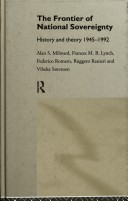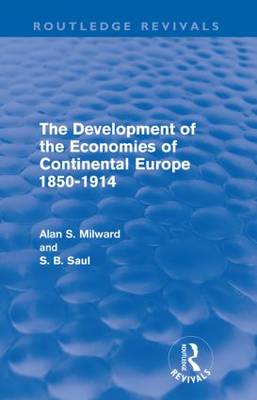Routledge Revivals
2 total works
The Frontier of National Sovereignty
by Alan S. Milward, Ranieri Ruggero, Frances M. B. Lynch, Federico Romero, and Vibeke Dorensen
Published 17 June 1993
Many theoretical explanations have been offered for the rise of the European Community, but historical analysis is rarely used to define the deeper significance of the events surrounding Maastricht. In this book however, the authors explore the process of European integration, and its future, drawing on extensive empirical research into the national archives of the member states. New evidence of the relationship between national and political strategy and the European Community, in Britain, Denmark, France, Italy and the United States, is used to reveal how interdependence and integration work in practice. The historical record implies that the Community does not supersede but reinforces the sovereign nation-state, and that European integration in various forms is initiated by national rather than supranational considerations.
The Development of the Economies of Continental Europe 1850-1914 (Routledge Revivals)
by Alan S. Milward
Published August 1977
This work, first published in 1977, is a reissue of a trailblazing work; the first textbook of economic history to deal comprehensively with the economic development of the whole continent in this period and to do so from a continental rather than a British perspective. But it is more than merely a textbook: it is an interpretative synthesis of the wide range of research on this subject in many countries. As such it will be an indispensable guide for teachers and will extend and improve the scope of teaching by making available for the first time in English the results of continental research.
In addition, it is a work of fundamental interest to economists in which theories and hypotheses of economic development are now examined in a much wider historical context. In this way the book is an exploration of the objective validity of earlier theories and the starting point for further research into economic development and european history. The work covers the continental development of the German and French economies after 1870 and then in that context analyses the development of the smaller western economies. It then considers the relatively underdeveloped economies of eastern and southern Europe and includes the first attempt at a synthesis of economic development before 1914 in the Balkans. It concludes with an analysis of the international economy and its relationship to the economic development of the continent.
In addition, it is a work of fundamental interest to economists in which theories and hypotheses of economic development are now examined in a much wider historical context. In this way the book is an exploration of the objective validity of earlier theories and the starting point for further research into economic development and european history. The work covers the continental development of the German and French economies after 1870 and then in that context analyses the development of the smaller western economies. It then considers the relatively underdeveloped economies of eastern and southern Europe and includes the first attempt at a synthesis of economic development before 1914 in the Balkans. It concludes with an analysis of the international economy and its relationship to the economic development of the continent.

